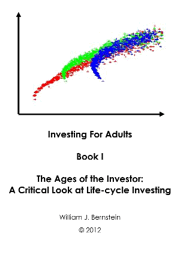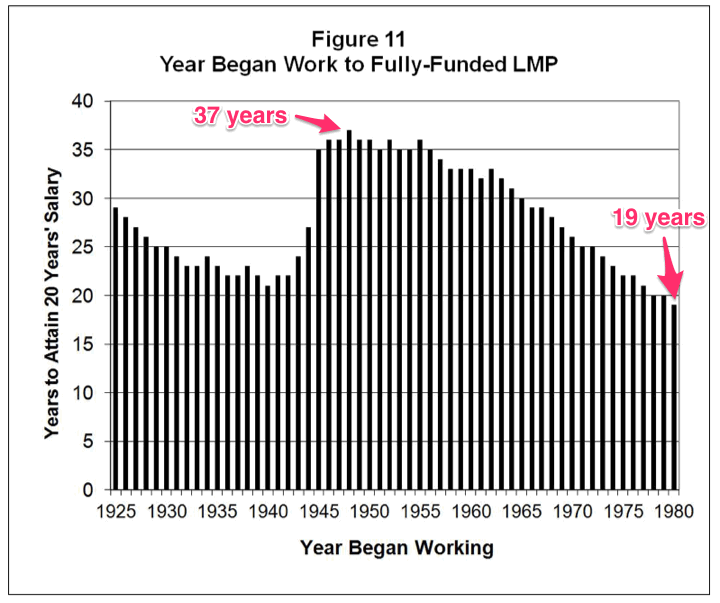
I am re-reading a series called “Investing for Adults” by William Bernstein. By “Investing for Adults”, Bernstein means that he assumes that you already know the basics of investing and that he can skip to more advanced insights. There are four parts:
A commonly-cited part of the first book The Ages of the Investor is the question “Once you have won the game, why keep playing?”. If you have enough money to buy a set of safe assets like inflation-adjusted annuities, delayed (and thus increased) Social Security payments, and a TIPS ladder to create enough income payments for life, you should seriously considering selling your risky assets and do exactly that. (This is referred to as a liability-matching portfolio, or LMP. You can keep investing any excess funds in risky assets, if you wish.)
A wrinkle to this plan is that you won’t know exactly when the stock market will help make that happen. Before you reach your “number”, you’ll most likely be buying stocks and hoping they grow in value. Let’s say you saved 20% of your salary and invested it in the S&P 500*. How long would it take you to “win the game”?

Historically, it could be as little at 19 years or as long as 37. That’s nearly a two-decade difference in retirement dates! Same savings rate, different outcomes.
This paradigm rests on too many faulty assumptions to list, but it still illustrates a valid point: You just don’t know when you’re going to achieve your LMP, and when you do, it’s best to act.
If you don’t act, the market might drop and it could take years to get back to your number again. This is one of the reasons why some people should not be holding a lot of stocks as they near retirement. Some people might need the stock exposure because the upside is better than the downside (they don’t have enough money unless stocks do well, or longevity risk), but for others the downside is worse than the upside (they DO have enough money unless stocks do poorly, or unnecessary market risk).
I find the concept of a risk-free liability-matching portfolio (LMP) much harder to apply to early retirement, as it is nearly impossible to create a truly guaranteed inflation-adjusted lifetime income stream that far into the future. Inflation-adjusted annuities are rare, expensive, and you’re betting that the insurer also lasts for another 50+ years if you’re 40 years old now. Social Security is subject to political risk and may become subject to means-testing. TIPS currently have negative real yields across the entire curve, and only go out to 30 years. (As Bernstein explores in future books, you’ll also have to avoid wars, prolonged deflation, confiscation, and other “deep risk” events.)
* Here are the details behind the chart:
As a small thought experiment, I posited imaginary annual cohorts who began work on January 1 of each calendar year, and who then on each December 31 invested 20% of their annual salary in the real return series of the S&P 500. I then measured how long it took each annual cohort, starting with the one that began work in 1925, to reach a portfolio size of 20 years of salary (which constitutes 25 years of their living expenses, since presumably they were able to live on 80% of their salary). Figure 11 shows how long it took each cohort beginning work from 1925 to 1980 to reach that retirement goal.
“The editorial content here is not provided by any of the companies mentioned, and has not been reviewed, approved or otherwise endorsed by any of these entities. Opinions expressed here are the author’s alone. This email may contain links through which we are compensated when you click on or are approved for offers.”
from .
Copyright © 2019 MyMoneyBlog.com. All Rights Reserved. Do not re-syndicate without permission.